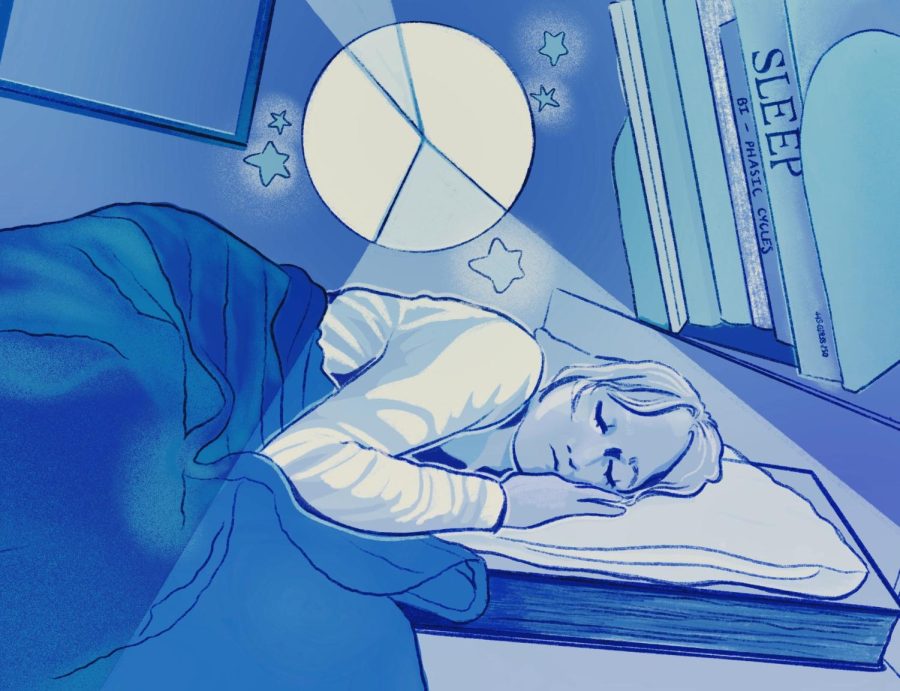Sleep like your ancestors did
February 19, 2023
The expectation to achieve eight hours of sleep every night looms over college students. For most, it’s an unrealistic goal to attain. But the dilemma of sleep deprivation can be solved through means that don’t involve caffeine dependence. Sleep requirements can instead be met by addressing the root cause: changing one’s sleep cycle.
It’s common knowledge to aim for seven to nine hours of sleep each night, but many misperceive what those eight hours should look like. Like our hunter-gatherer ancestors, humans were once “double-sleepers,” meaning it was considered abnormal to sleep just once every day. In the past two hundred years, humanity’s sleep patterns have significantly changed with the advent of technology. Humans have had to adjust their sleep cycles to accommodate their personal lifestyles.
Students should consider using the biphasic sleep cycle model, which splits sleep into two main segments per day.
Being a college student is comparable to a full-time job, and students’ class schedules can be spontaneous. Classes don’t typically align back-to-back, leaving students with large chunks of free time during the day.
According to Dr. Robert Fayle, a sleep specialist, the role of sleep is crucial to cognition and academic success. Certain amounts of slow-wave and REM sleep need to be met to maintain good health.
“If you have a chance to eat, eat. If you have a chance to sleep, sleep. You catch it where you can,” Fayle said.
In the last year, the Longhorn Wellness Center (LWC) pushed a new sleep initiative across campus, even creating a daytime nap map for students.
“We really support naps as a way to balance the sleep cycle. We try to provide guidance around what is an effective and efficient nap versus something that may interrupt your sleep cycle going into the night,” said Angelique Karditzas, a health promotion coordinator at LWC.
Despite studies illustrating an epidemic of sleep deprivation among college students, American culture continues to stigmatize daytime napping. However, many other countries specifically function around this bi-phasic sleep pattern, like many businesses in Spain close between 2pm and 4pm for citizens’ daily “siesta.”
“The power of sleep is just underestimated by students a lot. Sometimes, with the culture around productivity and just this busyness culture we hear about from students, sleep tends to be the first thing to go, unfortunately,” Karditzas said.
If students struggle to catch eight hours every night, they should reevaluate their sleep cycle and commit to a pattern that best suits their lifestyle. Karditzas finds napping common among UT students, but says it is typically not done in an ideal manner.
“(Biphasic sleep) can be done not only successfully but really well because short naps can be very effective cognitively,” Fayle said. “You just don’t want to get too much of it too late in the day.”
Biphasic sleep can be the key to a healthier lifestyle for sleep-deprived UT students. Students shouldn’t feel the need to conform to monophasic sleep just because it is society’s accepted standard. Similar to how some students are night owls and others are early birds, we should listen to our bodies and embrace our sleep preferences.
Monday is a Plan II and Health and Society freshman from Houston, TX.












